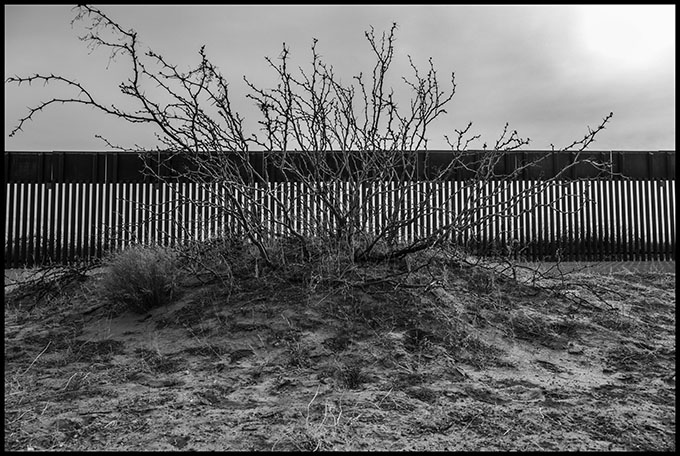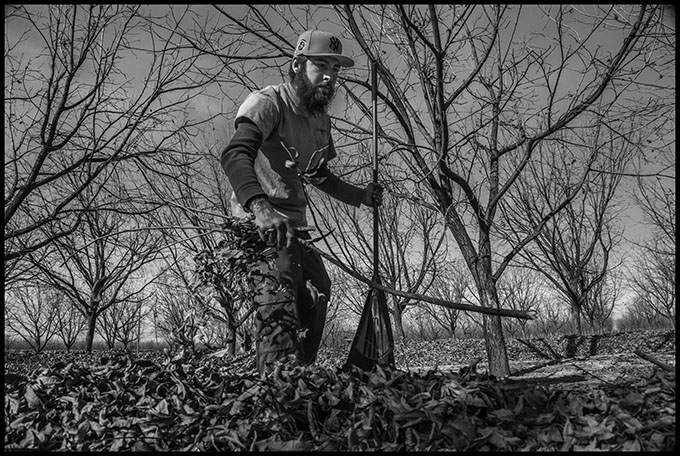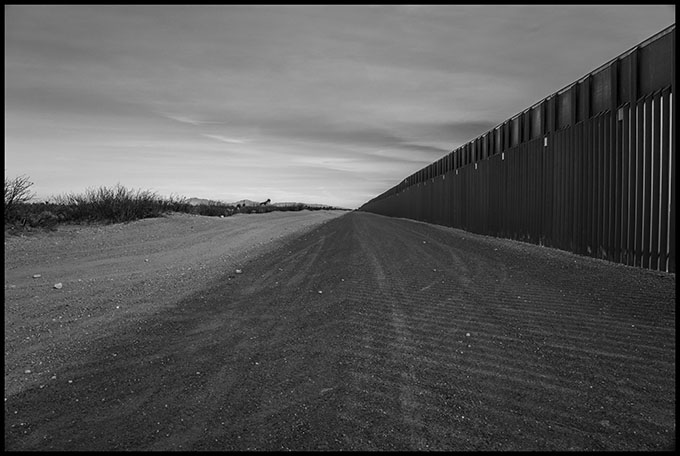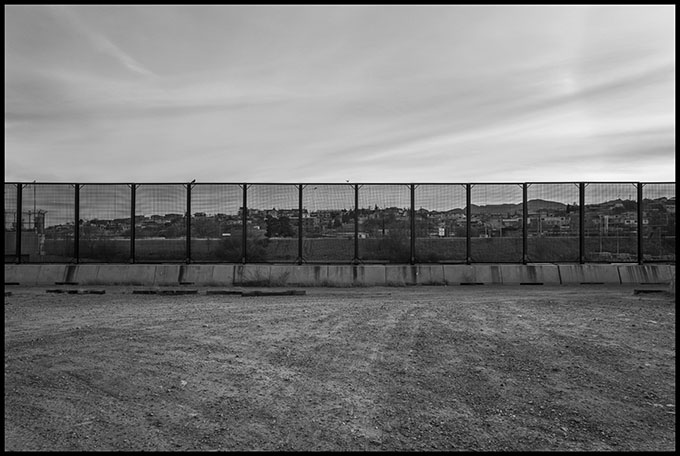The River, The Workers and The Wall: Las Cruces, NM and El Paso, TX
By David Bacon
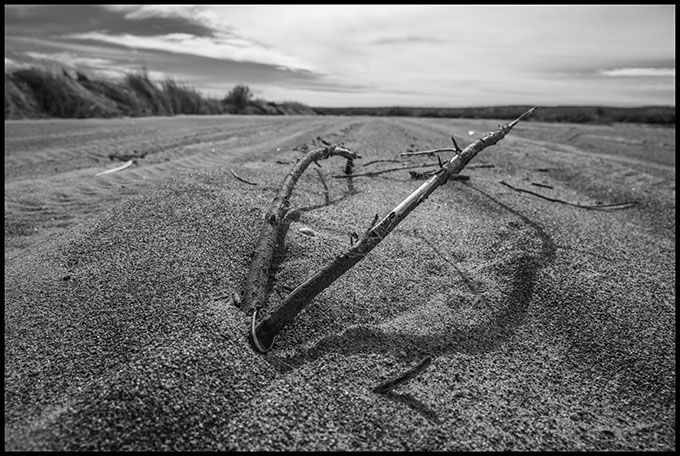
The Rio Bravo is the border between Mexico and the U.S. from El Paso and Juarez to Brownsville and Matamoros. Just upriver from El Paso it passes through New Mexico, or it would if there were water in it. Today, though, the mighty river is dry.
There are eight major dams on the Rio Bravo. The big one at Elephant Butte, near Truth or Consequences, controls the flow down through Las Cruces and El Paso. Welcoming the release of the water from Elephant Butte used to be an occasion, when people would come to greet the river as it came alive, submerging dry sand and brush under the new flow.
That flow, fed by the runoff from rains and snow in the Rockies, would begin in February and finally run dry in October. But climate change alters everything. In 2020 water began to course down the riverbed in March and petered out in September. This past year the river only flowed from June through July – two months instead of nine.
The dry river is the watercourse along Route 28, the old two-lane road that follows it through the Mesilla Valley from Las Cruces south to El Paso, marking the border between New Mexico and Texas. It is pecan country, where rundown buildings line the highway as it runs through old farmworker towns.
Its people may be poor, but pecans are New Mexico’s most profitable crop, worth over $220 million each year. Today Doña Ana County harvests more of the nuts than any other in the country.
From late December through early January alligator-like machines snake through the orchards, grabbing each tree between rubber-coated jaws, shaking the pecans off the branches. Another machine follows behind, sweeping the nuts into long rows.
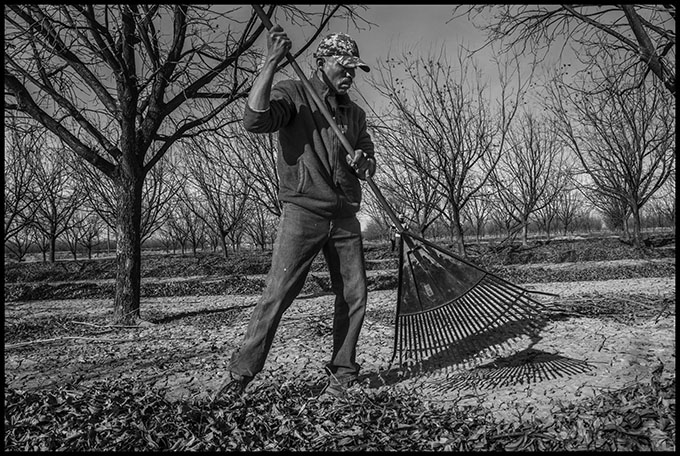
Then the workers arrive. They clean out branches and debris that would otherwise choke the final set of machines in the groves – the giant vacuum cleaners that suck up the nuts, spit out the leaves, and haul the crop down to the sheds.
Pecan workers were some of the Southwest’s first labor activists. Emma Tenayuca, a young Communist organizer trained at the Universidad Obrera in Mexico City, led twelve thousand young Mexican and Chicana women out on strike in San Antonio in 1938.
This generation of pecan workers, however, may be the last. The trees yield big profits for growers, but they need water, and the river is drying up. The aquifer below the valley depends on river flow, so pumping water is a solution that will only work for a while longer.
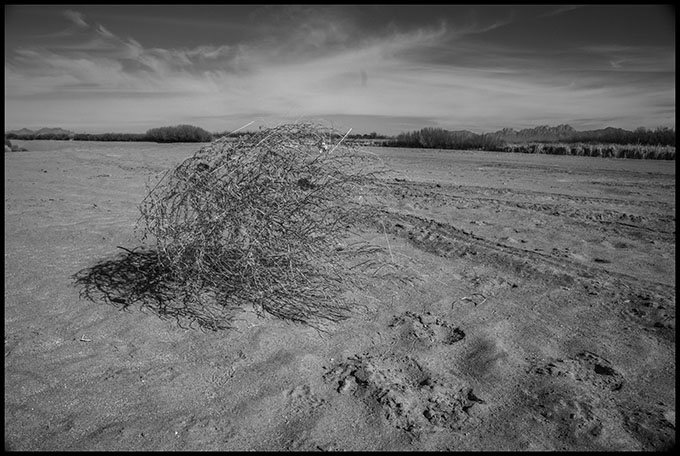
According to Kevin Bixby, director of the Southwest Environmental Center, “it’s only a matter of time until people understand that growing pecans in the desert is not sustainable. Water is a resource of public trust, which means that the government has the duty as an administrator to manage this resource for the benefit of all, including future generations.”
Below the Mesilla Valley, just before the riverbed becomes the border between Mexico and the U.S., the new barrier wall stretches through chamisa and sagebrush, across the desert west of El Paso.
In El Paso itself, the city of Juarez is visible through an older section of the wall and its network of wire mesh. Elevated roadways hug the borderline, while underneath it lies an abandoned landscape of empty lots and abandoned buildings from an earlier era.
People arriving from the south produced the pecan industry and its profits. But the wall remains a potent symbol of the hostility of Texas and U.S. authorities towards migrants, wanting their labor but denying their human dignity.
…
